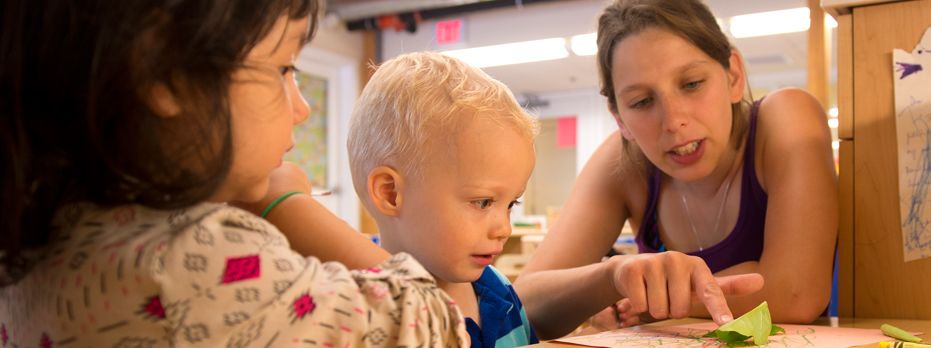Supporting English Language Development in Young Children in the USA
Supporting English Language Development in Young Children in the USA
Helping young children develop strong English language skills is crucial for their academic and social success. In the United States, parents and educators are increasingly focusing on natural and engaging methods to foster language acquisition. In this post, we will share practical strategies to encourage natural English language development in young children, including interactive activities and proven tips.
1. Why Early Language Development Matters
Early language development is essential for children to build strong communication skills and succeed academically. Here are some key reasons why it matters:
- Cognitive Growth: Enhances brain development and critical thinking skills.
- Social Interaction: Builds confidence in communicating with peers and adults.
- Academic Success: Lays the foundation for reading, writing, and comprehension.
- Cultural Connection: Helps children integrate smoothly into English-speaking environments.
2. Strategies to Support Natural English Language Acquisition
2-1. Create a Language-Rich Environment
- Talk Frequently: Narrate daily activities like cooking or getting ready in simple English.
- Label Household Items: Place labeled cards on objects around the house to build vocabulary.
- Use Simple Phrases: Keep sentences short and clear, like “Time to eat!” or “Let’s play!”
2-2. Read Aloud Daily
- Choose Age-Appropriate Books: Opt for picture books and repetitive stories.
- Interactive Reading: Point to pictures and ask questions like “What is this?” or “What color is that?”
- Favorite Books: Repeat reading beloved stories to reinforce language patterns.
- Recommended Books:
- Brown Bear, Brown Bear, What Do You See? by Bill Martin Jr.
- Goodnight Moon by Margaret Wise Brown
- Where the Wild Things Are by Maurice Sendak
2-3. Sing Songs and Nursery Rhymes
- Why It Works: Singing helps develop rhythm, pronunciation, and vocabulary.
- Popular Songs:
- “Twinkle, Twinkle, Little Star”
- “The Wheels on the Bus”
- “Old MacDonald Had a Farm”
- Activity Tip: Add simple hand motions or dance moves to make it more engaging.
2-4. Encourage Storytelling and Pretend Play
- Story Bags: Fill a bag with random objects and have your child make up a story using them.
- Role-Playing: Set up a pretend restaurant or store to practice conversation skills.
- Puppet Shows: Use puppets to act out stories or invent new scenarios.
2-5. Use Educational Apps and Digital Tools
- Interactive Story Apps: ABCmouse, Epic!
- Language Games: PBS Kids, Starfall
- Video Resources: Sesame Street on YouTube and other English-speaking shows
- Why It Works: Engages children visually and auditorily while reinforcing language concepts.
3. Involving Family and Friends
3-1. Bilingual Playdates
- Why It Helps: Encourages practical language use in a social setting.
- Activity Idea: Host themed playdates like “Storytime Saturday” or “Cooking in English.”
3-2. Talking with Family Members
- Consistent Language Use: Encourage family members to use English naturally during conversations.
- Virtual Chats: Use video calls with English-speaking relatives to build comfort with conversational English.
4. Practical Tips for Parents
4-1. Be Patient and Encouraging
- Celebrate Small Wins: Praise efforts, even if sentences are incomplete.
- Model Correct Language: Gently repeat sentences correctly rather than correcting directly.
4-2. Maintain a Positive Attitude
- Avoid Pressure: Let children explore language at their own pace.
- Celebrate Progress: Acknowledge improvements to boost confidence.
4-3. Incorporate English into Daily Routines
- Grocery Shopping: Name items as you pick them up.
- Cooking Together: Discuss ingredients and recipes.
- Bedtime Routine: Sing a lullaby or read a bedtime story in English.
5. Language Development Milestones
5-1. Age 1-2 Years
- Skills: Simple words and phrases, basic understanding of common commands.
- Activities: Pointing to body parts, singing simple songs.
5-2. Age 3-4 Years
- Skills: Constructing simple sentences, asking questions.
- Activities: Storytime, picture description, imaginative play.
5-3. Age 5-6 Years
- Skills: Using complete sentences, storytelling.
- Activities: Reading beginner books, role-playing complex scenarios.
6. Final Thoughts
Supporting young children’s English language development doesn’t have to be daunting. By incorporating natural, playful methods and creating a language-rich environment, parents can help their kids build strong communication skills while having fun. Consistency, encouragement, and interactive activities are the keys to fostering confident and fluent English speakers.
Related Keywords
English language development USA, teaching English to young children, natural language acquisition tips, language-rich environment ideas, supporting bilingual kids
Amazon best seller







Comments